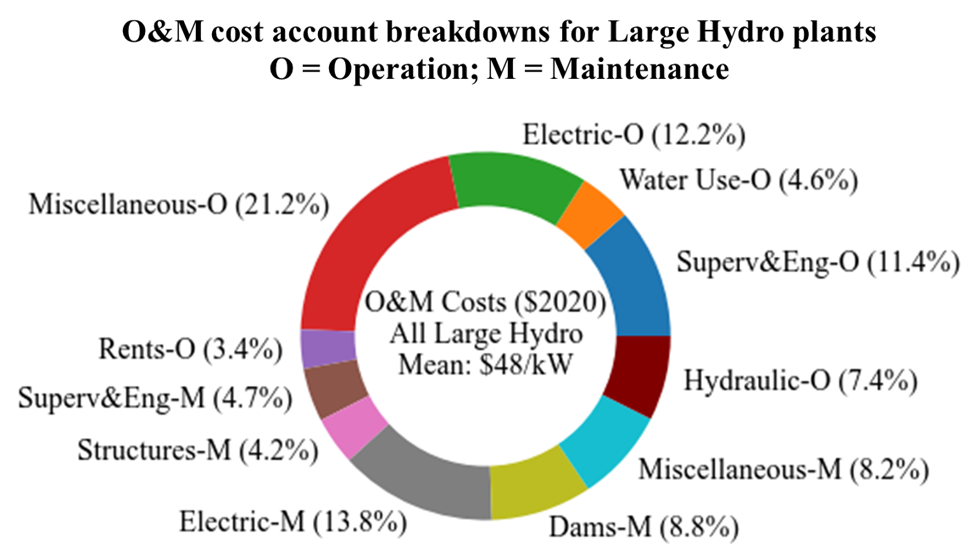Project Details

Overview/Objective
To effectively track and assess the effects of R&D activities on the economic competitiveness of hydropower technologies—and to effectively prioritize those activities—the US Department of Energy (DOE) and other hydropower stakeholders need data regarding the costs and performance of US hydropower plants.
The Hydropower Cost Modeling project provides those data, along with modeling and analysis. Although many private-sector organizations are capable of modeling the cost of hydropower, none has the incentive or capability to perform analyses and derive insight at the national scale necessary to support decision-making by DOE and other policymakers. Executing this work through DOE and the national laboratories ensures that results are scientific, credible, and unbiased.
The Hydropower Cost Modeling project has three main goals:
1) Gather information and analysis to identify and justify high-impact R&D efforts
2) Provide the best-available information on national-scale hydropower costs and performance
3) Provide a mechanism by which DOE can track and communicate the impact of R&D investments
Secondary objectives include providing unbiased cost data and analyses to support policymakers, improving modeling inputs for the broader research community, and helping small developers better screen and characterize hydropower development opportunities.
Results
Results from this project will be used to update data sets and knowledge on national hydropower costs. Multiple small hydropower consultants will be directly engaged to support cost modeling activities, and the broader hydropower community will be consulted to evaluate, improve, and validate cost baselines and targets. The focus of current work includes non-powered dams (dams that do not generate power), stream-reach development (uninterrupted areas of rivers or streams), and relicensing data.
Impact/Intended Impact
The ultimate goal of this data collection and modeling is to help reduce the costs of hydropower development and operation through effective R&D. Information from this effort will be used by a variety of key stakeholders, including researchers, DOE, and policymakers. The broader hydropower community will benefit from improved high-level cost estimating tools and from improved representation of hydropower in policymaking activities. Products from the project will be disseminated via conference presentations, journal articles, and industry workshops.


